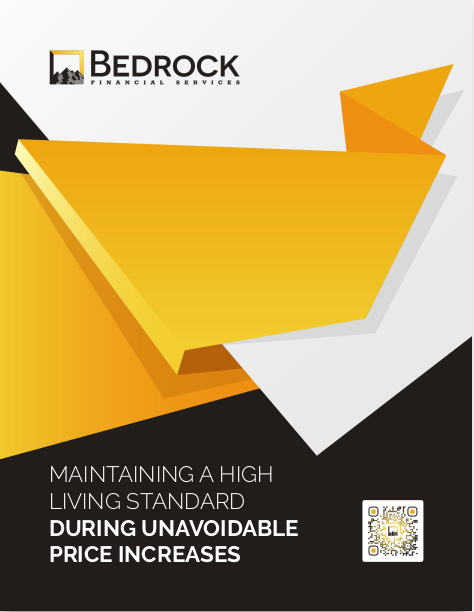Key Takeaways
-
Clients stay loyal not because you offer the lowest price, but because they consistently remember how you made them feel—valued, heard, and supported.
-
Memorable interactions, personalized touches, and clear communication strategies will do more for your retention than shaving down your margins.
Why Price Isn’t the Loyalty Trigger
In 2025, competing solely on price is a quick way to commoditize your value. As a financial professional, your expertise, guidance, and trustworthiness hold far more weight in a client’s long-term decision-making than your cost. Price may win the initial conversation, but it rarely wins the second or third.
Clients rarely leave because of a single price increase. They leave when they no longer feel like you’re invested in them. Your real leverage lies in perception, not pricing.
-
Did you respond quickly when they had questions?
-
Did you guide them through confusing choices with clarity?
-
Did you proactively reach out when life events might’ve affected their financial plan?
These are the moments that clients remember—and what they’ll share with friends or family when recommending you.
The Power of Emotional Impressions
Client loyalty is an emotional decision disguised as a rational one. You can present detailed comparisons, show charts, and explain tax benefits—but what sticks is how safe and confident clients feel during your interactions.
Your brand is not just your logo or email signature. It’s the feeling people associate with your name. That feeling must be reinforced consistently through every:
-
Meeting (virtual or in-person)
-
Follow-up email
-
Annual review
-
Milestone acknowledgment
When those touchpoints feel like personalized attention rather than obligations, retention becomes a natural outcome.
Make Yourself Unforgettable, Not Just Reliable
Being consistent and dependable is foundational, but memorability is what separates you from a dozen other professionals with similar credentials.
You don’t need grand gestures to be remembered. You need:
-
Thoughtful timing: Send a note during tax season not to promote services, but to offer clarity.
-
Unexpected follow-ups: After a client meeting, send a summary that includes personal references from your discussion.
-
Strategic surprises: Congratulate them on life events—birthdays, retirements, home purchases—with relevance to their plan.
Your goal isn’t just to remind them you exist. It’s to remind them why you’re the best person to trust.
Retention Begins Before the First Contract
Retention isn’t something you start working on after onboarding. It begins from the very first impression.
By the time a prospect becomes a client, they’ve already begun mentally evaluating whether you’re a long-term fit. Set the tone early:
-
Be crystal clear about your process and timelines.
-
Avoid jargon in your onboarding emails.
-
Provide a short welcome video or note explaining what comes next.
This approach puts you miles ahead in establishing clarity and professionalism, which later gets remembered as dependability.
Build In “Memory Hooks” Into Every Step
Think of memory hooks as small, intentional acts designed to imprint a feeling or thought in your client’s mind. They’re subtle but powerful.
Here’s how to incorporate them:
-
Onboarding: Give new clients a simple visual roadmap of what to expect in the first 30, 60, and 90 days.
-
Check-ins: Personalize every review with a reminder of previous goals and celebrate wins—big or small.
-
Communication habits: Choose a consistent voice and format for your emails, so clients instantly recognize you.
-
Year-end reviews: Frame financial conversations in terms of their actual life outcomes (e.g., “You saved enough for two years of college expenses”).
Memory hooks make your service feel more human, which makes your value easier to recall.
Silence Is the Real Threat
In 2025, client expectations for transparency and responsiveness are higher than ever. Ghosting your clients—even unintentionally—is the fastest way to be forgotten.
Avoiding silence doesn’t mean overloading them with information. It means building a cadence they can count on:
-
Monthly short updates (even if it’s just a market note or friendly check-in)
-
Quarterly summary reports
-
Biannual deep-dive strategy sessions
Make sure your clients never have to wonder, “When will I hear from them again?”
Be Human in a Digital-First Era
Digital communication tools are essential in 2025. But automation should support—not replace—authenticity.
Use your tools to enhance personalization:
-
Set reminders for client birthdays and follow through with handwritten notes.
-
Use CRM systems to track children’s names, vacation plans, or career milestones.
-
Send a video message instead of an email when explaining a big update.
What makes you memorable is how well you balance digital efficiency with a human tone.
Position Yourself as a Lifelong Resource
Too often, financial professionals focus only on the client’s current need. But retention grows when you position yourself as someone who can adapt with them over time.
Show them that your value evolves:
-
Discuss how today’s decisions impact retirement 20+ years from now.
-
Bring up future milestones (college funding, downsizing, legacy planning) even if they aren’t priorities yet.
-
Reinforce your ability to support them through unexpected changes.
This long-view approach makes you indispensable.
Talk Like They Do, Not Like You Do
Retention has a lot to do with being understood. And being understood begins with speaking the way your clients think.
Replace abstract terms with concrete concepts:
-
Instead of “asset allocation,” try “how your money is split across buckets that grow differently.”
-
Rather than “market volatility,” say “what happens when your portfolio goes on a rollercoaster.”
Your clients will remember you because you helped them understand what others made complicated.
Your Reputation Is Built Between Appointments
The space between your formal meetings holds the greatest opportunity for client retention. Why? Because this is where most professionals go quiet.
You build retention here by:
-
Sending periodic value emails that ask nothing in return
-
Offering tips tied to seasonal changes or relevant financial deadlines
-
Being proactive with news that might affect their specific circumstances
This kind of quiet consistency makes you part of your client’s life—not just their financial file.
Retention in Year 1, 3, and 5
Retention looks different depending on where the client is in your relationship timeline. Build your strategy with those durations in mind:
Year 1:
-
High frequency, low friction contact
-
Focus on building familiarity and trust
-
Avoid overloading with too many decisions early on
Year 3:
-
Prioritize milestones and results
-
Reaffirm long-term plans while adapting to changes
-
Invite feedback and adjust your communication cadence
Year 5 and beyond:
-
Reinforce the value of longevity with you
-
Celebrate progress toward bigger goals
-
Offer occasional refreshers of the original vision, showing how far they’ve come
Staying memorable isn’t a one-time action. It’s an evolving process that matches your client’s journey.
Loyalty Is Built on Being Known, Not Just Being Right
Your goal as a financial professional isn’t to get every forecast correct—it’s to show your clients they’re not navigating alone. Most people don’t remember what you said during a portfolio review. They remember that you took the time to explain it.
In an industry filled with similar products and services, your personality, consistency, and intent become the differentiators.
Stand Out By Being the One They Can’t Forget
Being the cheapest won’t help if you’re also the easiest to replace. Clients stay with you because you show up consistently, you listen deeply, and you make your guidance easy to follow.
Retention is the outcome of being emotionally present and strategically proactive.
If you’re ready to elevate your client retention strategy, sign up with Bedrock Financial Services. We offer the tools, training, and automation to help you make your client experience unforgettable. With our support, you’ll create connections that last well beyond a single transaction.







